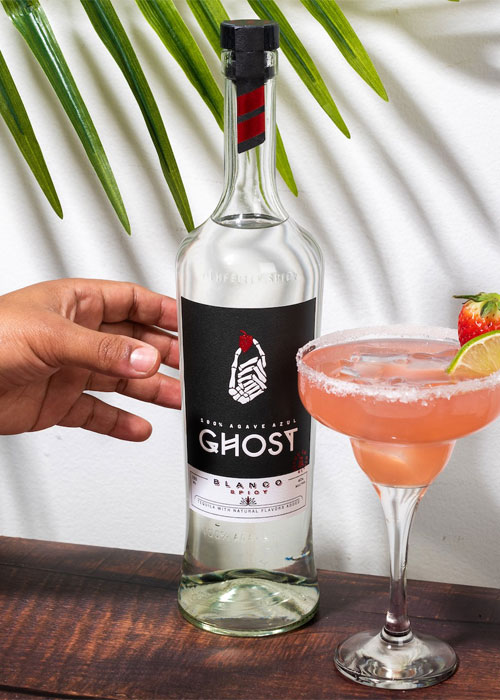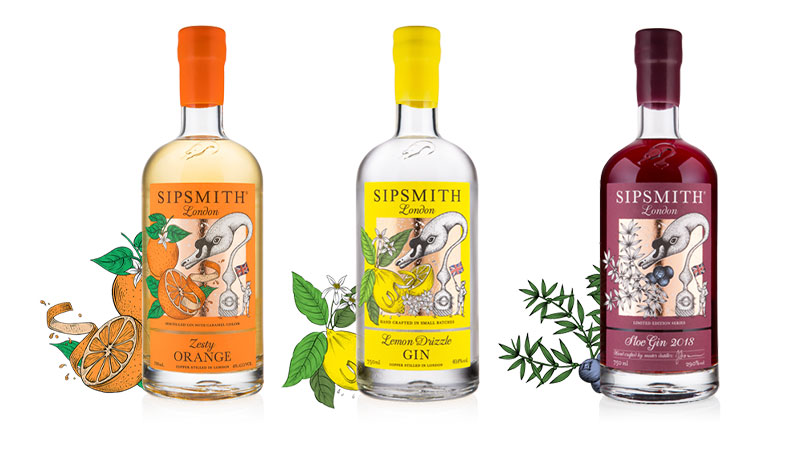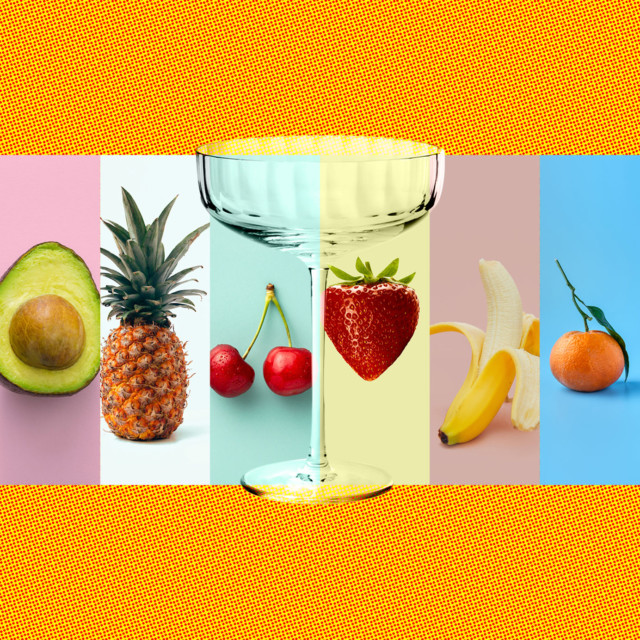As someone who’d spent most of his adult life working behind the bar, Chris Moran knew exactly what he was getting into when he launched his chili-pepper-infused Ghost Tequila in 2016. “As a bartender, you’re taught that you should take quality spirits and craft something yourself,” he says. “I was biased against flavored spirits.”
On the other hand, Moran’s time behind the bar taught him the importance of consistency. He knew that if he could put a competitively priced, high-quality spicy tequila in front of bartenders, most would favor that over chopping up jalapeños and infusing their own, with mixed results the only guarantee. It didn’t harm matters that by the time he went to market, tequila was already trending, and had an established cocktail batting for it — who among us doesn’t love a spicy Marg?
Moran’s experience is the perfect example of how general biases against flavored spirits can cloud judgement of their true value. Despite what most discerning drinkers would like to believe, flavored spirits have shown remarkable staying power over the years, even if individual flavors themselves eventually become fads.
While the days of bubblegum or whipped cream vodka are (mercifully) behind us, volume sales of flavored spirits as a whole grew by double digits last year. Far from vodka leading that charge, flavored whiskey, tequila, and gin saw the largest gains. Looking forward, market analysts aren’t just predicting that this trend will continue, they forecast drinkers will also spend more per bottle on flavored liquors over the next five years. Put simply: If you aren’t already, it’s time to take flavored spirits seriously.
Volume and Value Sales
By all accounts, 2020 proved to be a bumper year for flavored spirits. According to IWSR data, volume sales of flavored gin grew 12 percent, flavored tequila volumes rose 26 percent, and flavored American whiskey volumes increased a whopping 79 percent. In each instance, growth of the subcategories significantly outperformed their non-flavored “traditional” alternatives.
Interestingly, that trend may have been driven by other types of alcohol. “Based on IWSR’s consumer research, flavor is the number one driver of choice in RTDs.” writes Brandy Rand, COO of the Americas at IWSR Drinks Market Analysis. “[A]nd given the range and pace of flavor innovation in this category, it’s natural that demand will cross-over into spirits,” Rand concludes.
While the majority of flavored spirits purchases in the U.S. are currently taking place at the “standard-and-below” price tier (less than $22.50 per 750-milliliter bottle), it’s the “premium-and-above” category ($22.50-plus) that IWSR predicts will grow most over the next five years. Meanwhile, in news that will no doubt delight Ghost Tequila’s Moran, agave-based flavored spirits are expected to enjoy the largest gains in that time. (Moran saw his own sales “almost double” last year.)

Of course, growth is more indicative of trends than overall success. But on the dollar sales front, flavored spirits have performed just as admirably in 2021.
Let’s dial into some individual brands: For the first 12 weeks of this year, Fireball Cinnamon Whiskey posted the second-highest total dollar sales, behind only Tito’s Vodka, according to off-premise Nielsen data. (For what it’s worth, Fireball also claimed second place for YoY dollar growth, behind Hennessy V.S.) During that same period, Crown Royal Peach outperformed Casamigos Blanco, while Skrewball Peanut Butter Whiskey raked in more than Johnnie Walker Red.
For anyone who’s reading this and thinking: “Fireball Cinnamon and Skrewball are just anomalies, and they aren’t real whiskey brands,” the top three names in American whiskey are all also firmly established in the flavor field. (Also, Sazerac — the same company that produces Pappy Van Winkle — owns Fireball.)
Jack Daniel’s offers Tennessee Honey and Tennessee Apple, alongside its own cinnamon-spin Tennessee Fire. Jim Beam has no fewer than seven flavored whiskeys, the most recent of which, Orange, hit the market this June. Evan Williams’ flavored collection also stretches seven deep.
“I love to talk about ‘pure’ whiskey innovation, but one of the areas that continues to be of interest to us is flavored whiskey,” Susan Wahl, vice president of American whiskeys at Evan Williams’ parent company, Heaven Hill, told me last fall. Wahl also lamented that the company had been “a little late to the game” in launching Evan Williams Apple (in April 2019). But by the time of our conversation, the flavor had already had a “big impact” on the flavored whiskey portion of Heaven Hill’s business, she said.
Craft and Premium Flavored Spirits Offerings
Armed with all this knowledge, it should surprise no one that whiskey now enjoys the largest share of flavored spirits sales. For second-placed vodka, flavored expressions account for roughly one of every five bottles of vodka sold, according to data from the Distilled Spirits Council.
Still, flavored whiskey and flavored vodka don’t seem very cool as subcategories, do they? Maybe not for some, but the 70-proof, Casamigos-conquering Crown Royal Peach has emerged as one of this year’s most coveted and collectible bottles. Some retailers even reported that they get more calls for it than Pappy Van Winkle or Blanton’s.
Craft distillers making high-quality fruited vodkas have deposited further cachet in the flavor bank — as have annual, limited-edition releases from renowned gin producers like Sipsmith. These flavored spirits may not move the financial needle in the same way that Fireball does, but they certainly make it harder for “real” drinkers to turn up their noses.

Of the several hundred bottles I’ve sampled this year as VinePair’s lead spirits reviewer, the Mango and Pineapple flavored mezcals I recently tried from Gracias a Dios certainly didn’t fall in the bottom half when it came to quality. In fact, I’d say they were pretty bloody tasty, and ideal for cocktail creation.
This brings us nicely back to Moran and Ghost Tequila. For another article I worked on earlier this year, I explored what — if anything — tequila producers could do to make the category a real contender for the throne as America’s most valuable spirit. I gave little thought to flavored expressions at the time, but if the analysts are correct, this was an oversight. And it certainly tracks with Moran’s more recent experiences.
“The problem now is that anytime you walk into a bar or liquor store to sell your product, they’re going to look at you with a new tequila and say, ‘I’ve got 120 other blancos, repos, and añejos already. What makes this one different?’” he says.
“That’s one of our main advantages. When I walk into a bar, I say: ‘This is Ghost Tequila, this is what it tastes like, and guess what the use is? The hottest thing you’re doing behind the bar,’” Moran continues, pun apparently unintentional. “It makes it a much easier sell and I don’t need space for a blanco, reposado, añejo, and maybe an extra añejo. It’s just one bottle, and it really fits both the consumer’s need and makes their life easier.’”
Are you ready to take flavored spirits seriously yet?
This story is a part of VP Pro, our free platform and newsletter for drinks industry professionals, covering wine, beer, liquor, and beyond. Sign up for VP Pro now!
